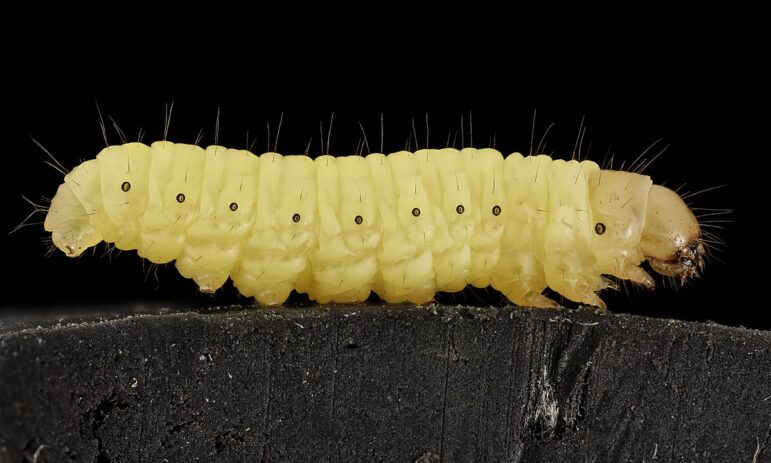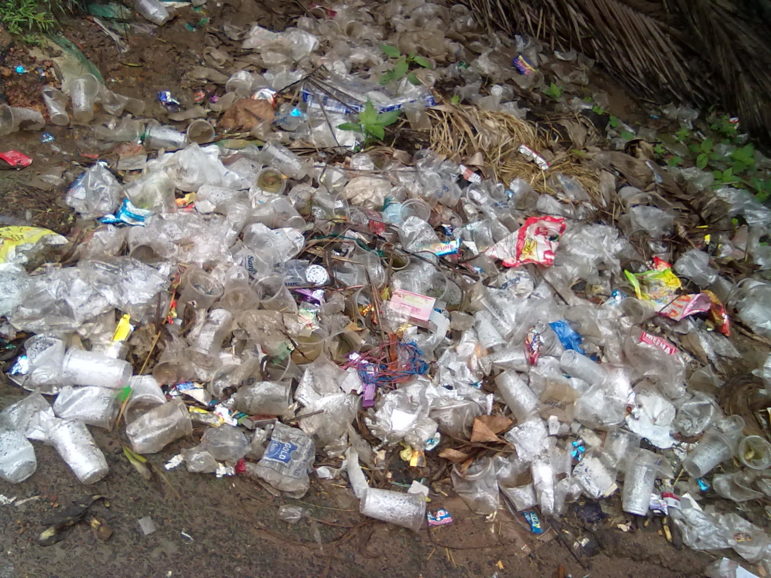MADRID – Lughnasadh is not just a first harvest for Pagans, it is a mark for many beekeepers. Beekeepers typically harvest honey from their beehives during the late spring to early summer, and sometimes into the early fall, depending on the local climate and availability of nectar-producing plants. For much of the northern hemisphere, however, we are in peak harvesting season- just a few weeks after Lughnasadh staring down early fall. For some beekeepers closer to the tropics, late summer might be a second harvest.
But this story is not about the harvest. It is about one of the great enemies of honey beekeepers: the wax moth.
The wax moth is a type of moth that is hated by beekeepers. It is known for its ability to infest beehives with their larvae and cause damage to beeswax combs and stored beekeeping equipment. They can ravage a hive; what’s worse is that they seem to have an uncanny ability to identify weak hives causing them to collapse.
There are two species of wax moths: the Greater wax moth (Galleria mellonella) and the Lesser wax moth (Achroia grisella). They fly between hives and lay 200-500 eggs that hatch in less than a week. The larvae – the waxworms- burrow immediately into the hives destroying both brood and honey cells in the honeycomb. They also weave intricate tunnels of resilient silk to shield themselves against bees. What honey they might miss, is usually contaminated with insect parts and feces from the larvae.

The Greater wax mot larva (Galleria mellonella) [Photo Picture by Wayne Boo. Waxworm wrangling by Desiree Narango – Public Domain]
One regular task of a beekeeper is hive inspection to monitor for the presence of wax moth infestation.
In 2017, amateur beekeeper Dr. Federica Bertocchini, a molecular biologist at the Center for Biological Research in Spain was doing just that: inspecting her hives because they had an infestation of Greater wax moths. “My beehives were plagued with wax worms, so I started cleaning them, putting the worms in a plastic bag,” Bertocchini, told The Guardian.
She collected the waxworms manually and placed them in plastic bags in the hopes of saving her hives. In just a few hours, Dr. Bertocchini noticed holes in the plastic bags. But the bags had not been chewed.
“After a while, I noticed lots of holes, and we found it wasn’t only chewing—it was [chemical breakdown]. So that was the beginning of the story.” The waxworms were producing a substance that could break down plastic.
Last year, Dr. Bertocchini and her colleagues published their results in Nature Communications. The research took saliva from the waxworms and applied it to plastic films and found they broke down the films in just a couple of hours. They then went on a chemical hunt to identify which substances in the wax worm saliva were responsible for destroying plastics.
They found two enzymes capable of breaking down plastic at room temperature. The class of enzymes is now called PEases, PE after polyethylene, one of the most resistant plastic polymers known that accounts for “30% of synthetic plastic production, largely contributing to plastic waste pollution on the planet to-date.”
They wrote, “To the best of our knowledge, these PEases are the first enzymes capable of producing such modifications on a PE film working at room temperature and in a very short time, embodying a promising alternative to the abiotic oxidation of plastic, the first and most difficult step in the degradation process.”
“Plastics stay in the environment for a long time,” Bertocchini told Reuters. “It eventually breaks down into small particles, therefore becoming the source of micro and nano plastic particles. These plastic particles have been found everywhere, from Antarctica to rain and tap water, which do not only cause obvious environmental issues but are a growing problem for human health.”

Plastic waste in Batlapalem village in India – Image credit: Venkat2336 – Own work, CC BY-SA 3.0, https://commons.wikimedia.org/w/index.php?curid=21105342
The natural process of PE plastic breakdown would take years, by some estimates an average of 450 years for a plastic bottle. Previous research says that PE shows only “partial degradation and negligible weight loss when kept in moist soil for 12–32 years.”
Previous research has found some bacteria capable of breaking down plastic and this new research extends it, offering not only new enzymes for breaking down plastics but also enzymes that can do so under average environmental conditions, that is room temperature. The researchers wrote, “The identification of invertebrate enzymes capable of oxidizing PE in a few hours represents an alternative paradigm in the world of plastic degradation and more widely in the plastic waste management fields, opening up various possibilities which may help to solve the plastic waste pollution issue, along with expanding potential formulae/routes for synthetic polymer production.”
They noted that PEases (the new class of enzymes) might be used in plastic upcycling and as a potential tool for dealing with plastic pollution.
The researchers went further and were able to identify at least two enzymes from the wax moths responsible for PE plastic degradation. They named the two enzymes Demeter and Ceres, after the Greek and Roman goddesses of agriculture.
The Wild Hunt is not responsible for links to external content.
To join a conversation on this post:
Visit our The Wild Hunt subreddit! Point your favorite browser to https://www.reddit.com/r/The_Wild_Hunt_News/, then click “JOIN”. Make sure to click the bell, too, to be notified of new articles posted to our subreddit.
